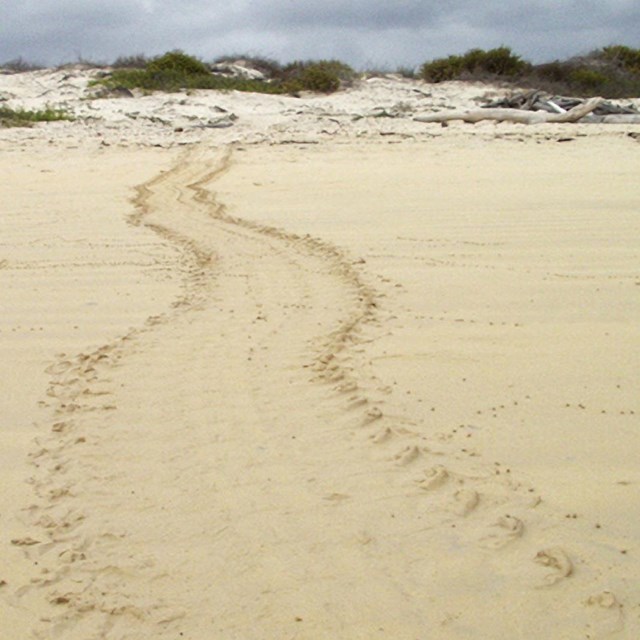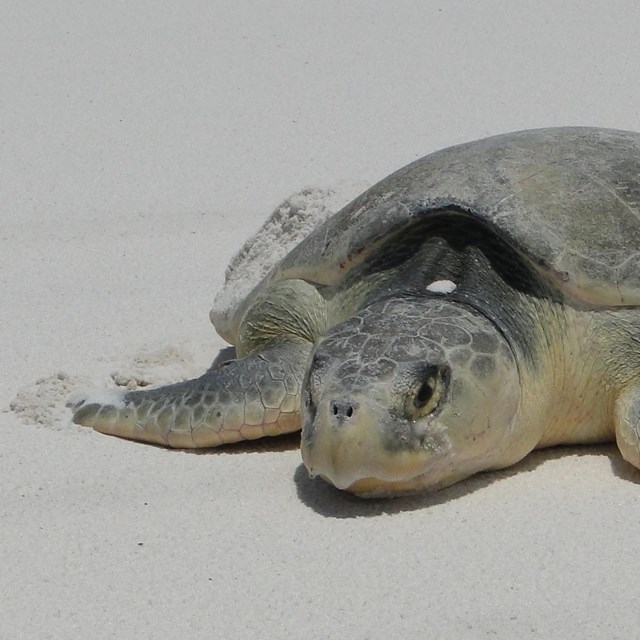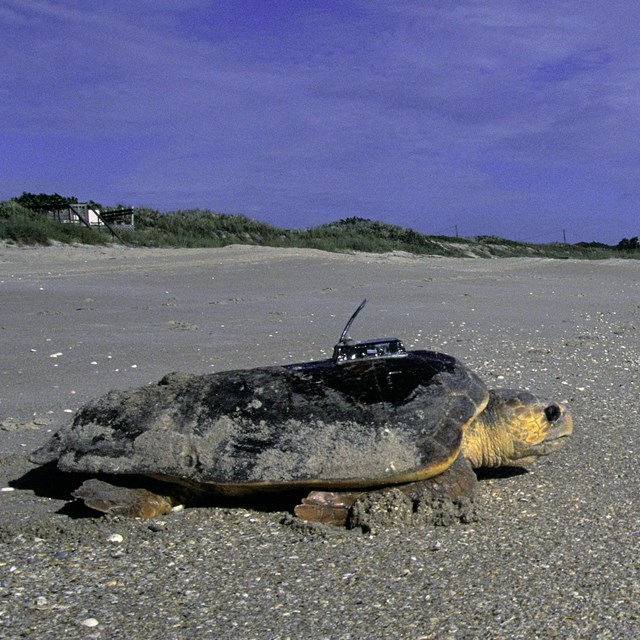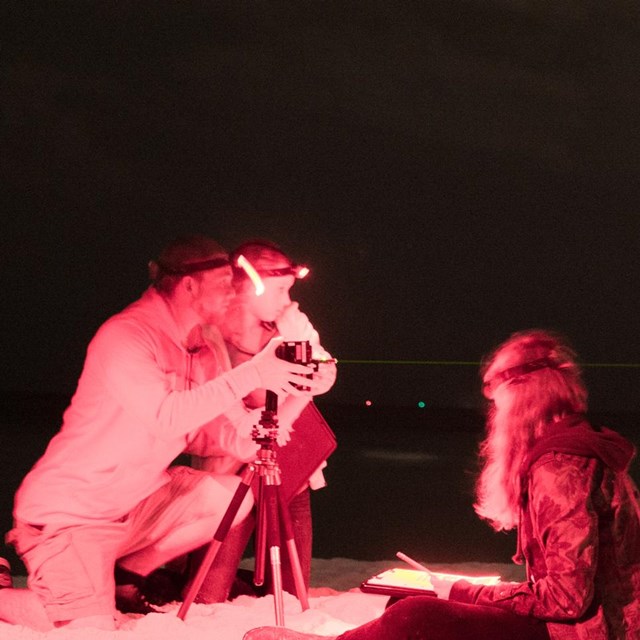
USFWS Images Loggerhead Sea TurtleThe loggerhead turtle (Caretta caretta) is the most common sea turtle in Florida’s waters, and the most common in Gulf Islands National Seashore. They grow on average to a length of three feet and a weight of up to 350 pounds. The carapace or top shell is slightly heart-shaped and ruddy brown in color, while the plastron or bottom shell is a pale yellow color. A loggerhead’s lifespan is unknown, but they reach sexual maturity at about 35 years of age. Their name derives from their large heads, which support powerful jaws and enables them to feed on hard-shelled prey, such as whelks, conch, clams, and crabs. Loggerheads are generally distributed across warm temperate waters and into the tropics. Nests are common in the national seashore. Green Sea TurtleThe green turtle (Chelonia mydas) is the largest of the hard-shell sea turtles, growing on average to a length of three feet and a weight of up to 500 pounds. The carapace is oval-shaped and smooth with shades of black, gray, green, brown, and yellow. The plastron is a yellow-white color. The lifespan of the green turtle is unknown, but sexual maturity occurs between 20 to 50 years of age. A green turtle’s diet is unique compared to the other six species of turtles. Adults are primarily herbivores, feeding on seagrasses and algae. A green turtle’s fatty tissues have a greenish hue because of their diet, which is how they take their name. Green turtles are distributed in tropical and warm temperate waters worldwide. Nests are uncommon in the national seashore, but green turtles are present in the coastal waters. Kemp's Ridley Sea TurtleThe Kemp’s ridley turtle (Lepidochelys kempii) is the rarest sea turtle in the world. They grow on average to a length of two feet and a weight of up to 100 pounds. Their carapace is nearly circular and grayish-green in color, while the plastron is a pale yellowish color. The lifespan of the Kemp’s ridley is unknown. Kemp’s ridley turtles prey primarily on crabs, fish, jellyfish, and mollusks. Their name derives from Richard M. Kemp, a Florida fisherman and naturalist who first documented the species in 1880. Kemp’s ridleys are distributed across the Gulf of Mexico and warm temperate waters of the western North Atlantic, along the coast between Florida and Cape Cod, Massachusetts. Nests are uncommon in the national seashore, but Kemp’s ridleys are present in the coastal waters. Leatherback Sea TurtleThe leatherback turtle (Dermochelys coriacea) is the largest of the seven species of sea turtles. They grow on average to a length of nine to twelve feet and a weight of up to 2,000 pounds. The only species without a hard shell, their soft carapace is primarily black and consists of leathery, oil-saturated connective tissue overlaying loosely interlocking dermal bones, which is how the leatherback receives its name. Their plastron is pinkish-white in color. The lifespan of the leatherback is unknown. Leatherbacks have pointed tooth-like cusps and sharp-edged jaws that enable them to prey on jellyfish and salps. Leatherback turtles are distributed across tropical and temperate waters worldwide and into the sub-arctic. Nests are rare in the national seashore, but leatherback turtles are present in the coastal waters. Hawksbill Sea TurtleThe hawksbill turtle (Eretmochelys imbricata) grows on average to a length of two to three feet and a weight of up to 150 pounds. The carapace is oval-shaped and dark to golden brown, with streaks of orange, red, and/or black with a serrated back and overlapping shell scutes, or thorny scales. The plastron is clear yellow. A hawksbill’s lifespan is unknown. Hawksbills feed prey primarily on sponges. The hawksbill receives its name from the raptor-like jaws that allow it to prey on sponges. Hawksbill turtles are distributed across tropical waters of the Atlantic, Pacific, and Indian oceans. Hawksbill turtles are not known to nest in the national seashore, but it is plausible that hawksbills are present in the national seashore’s waters. Learn more about sea turtles
|
Last updated: November 6, 2017




